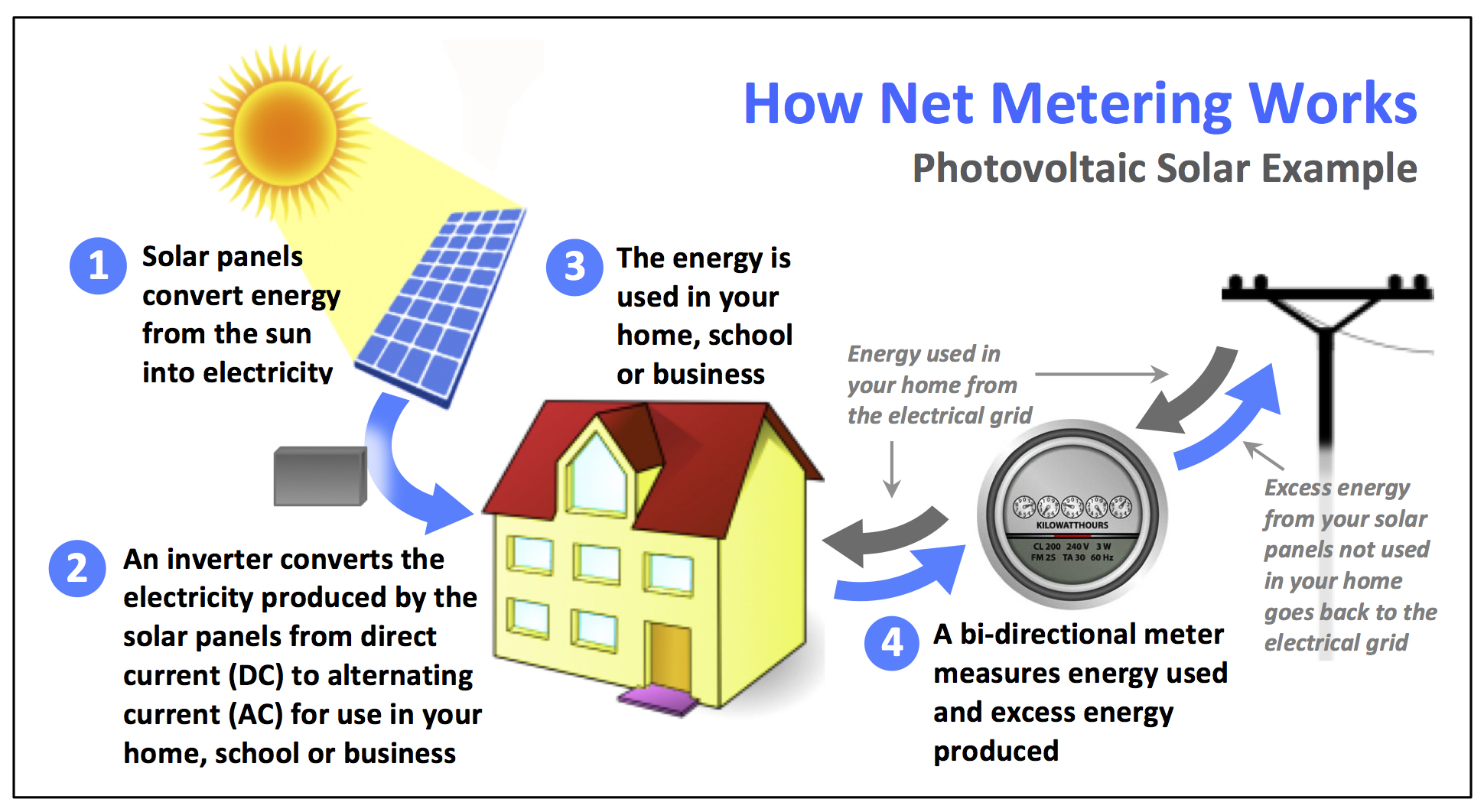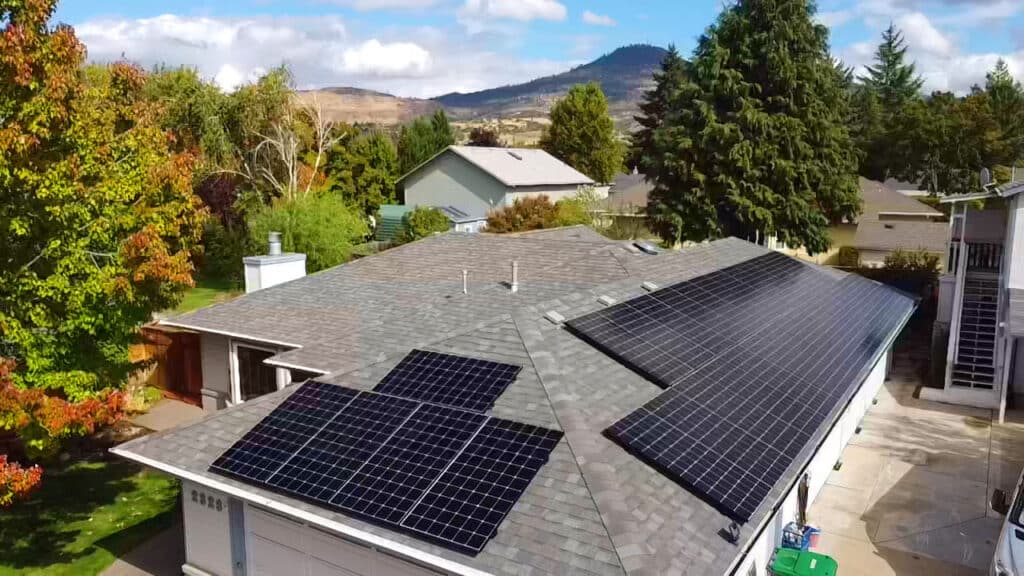Oregon’s net metering law allows all utility customers to generate their own electricity and reduce their electricity bills. When you install a solar electric system, your utility will come to your site and switch out your existing utility meter for a bidirectional “net” meter (there is no charge for the new meter). This meter keeps track of the power you acquire from the utility, and what you supply to the grid. Each month, the power you used from your utility is offset by the power you send to the utility. You are only charged for the difference or the “net.”

When this excess electricity is sent back to the grid, the electric company must then buy that energy from the customer with solar panels. The billing system that makes this transaction possible is known as “net metering.” The customer is only paying the “net” total of electricity used from the utility minus electricity sold back to the utility.
If you generate more power than you use in a given month, your electric bill will have no kilowatt hour charges, and you will only have to pay the basic utility service charges. The surplus energy will generate kilowatt hour credits that will be applied to your future electric bills. Unused credits will accumulate in your Pacific Power or City of Ashland account. This means credits accumulated during sunny summer months can be applied to charges during Oregon’s cloudy winter months, eliminating the need for batteries to store your excess energy.
Once per year (around March), there is a truing-up of your account with the utility company. If you still have excess energy ‘banked,’ the utility company will zero-out your bill and you will start fresh. That’s why we don’t like to over-build solar: you cannot continue to accrue credit with the power company over multiple years. The closer we can get to building a solar electric system which offsets 100% of your annual energy usage, the more cost-effective your investment will be.
For information on Virtual Net Metering in the City of Ashland, Read on!

